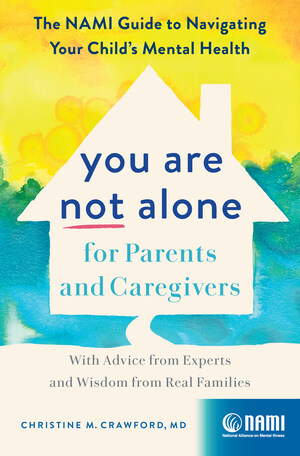ARLINGTON, Va., Oct. 5 /PRNewswire-USNewswire/ -- Housing costs for people living with disabilities who depend on Supplemental Security Income (SSI) can consume 60 and 140 percent of that income, according to the National Alliance on Mental Illness (NAMI).
(Logo: http://photos.prnewswire.com/prnh/20100216/NAMILOGO)
(Logo: http://www.newscom.com/cgi-bin/prnh/20100216/NAMILOGO)
State-by-State Data Below
In the past two weeks, the U.S. Census Bureau has reported that the nation today is experiencing its greatest level of poverty in 15 years while the gap between rich and poor is bigger ever. But poverty is nothing new for many Americans living with serious mental illness.
Mental health—and hope for recovery—must be part of the equation in addressing the nation's economic crisis. A key factor is the level of disability income relative to basic needs--such as a place to live.
In the fifth alert in an Election 2010 series, NAMI is reminding editors, reporters, bloggers and others to ask candidates to address these facts:
- Depending on the state, the rent for a one-person efficiency apartment may be between 60 and 140 percent of federal Supplemental Security Income (SSI), one of the main sources of support for people with disabilities. (Hawaii is a dramatic outlier at 170 percent.)
- SSI support is between 15 and 25 percent of the median income in each state.
- Approximately 35 percent of persons receiving SSI benefits are those with mental illnesses.
- About four million people receive some form of disability income for mental illness. They represent about 18 percent of all people living with mental illness, who compose slightly less than two percent of the nation's total population.
Previous NAMI Election Alerts
- State Grades: 21 Ds, 6 Fs
- State Suicide Rates
- Top 10 States; Mental Health Cuts
- Number of People w/ Mental Illness in Each State; Percent Served by SMHA
Disability Income vs. Housing Costs
State |
SSI Recipients with Mental Illness (rounded to 1000) |
SSI as a Percentage of One Person Median Income 2008 (rounded) |
Percent of SSI Needed to Rent an Efficiency (Studio) Apartment (rounded) |
|
Alabama |
59,000 |
21% |
75% |
|
Alaska |
4,000 |
23% |
69% |
|
Arizona |
37,000 |
19% |
93% |
|
Arkansas |
36,000 |
23% |
70% |
|
California |
438,000 |
22% |
103% |
|
Colorado |
22,000 |
17% |
90% |
|
Connecticut |
20,000 |
17% |
96% |
|
Delaware |
5,000 |
17% |
109% |
|
DC |
8,000 |
17% |
157% |
|
Florida |
162,000 |
19% |
119% |
|
Georgia |
77,000 |
19% |
97% |
|
Hawaii |
8,000 |
15% |
170% |
|
Idaho |
9,000 |
21% |
72% |
|
Illinois |
94,000 |
17% |
105% |
|
Indiana |
39,000 |
19% |
79% |
|
Iowa |
16,000 |
19% |
68% |
|
Kansas |
15,000 |
18% |
73% |
|
Kentucky |
66,000 |
21% |
70% |
|
Louisiana |
59,000 |
22% |
92% |
|
Maine |
12,000 |
20% |
84% |
|
Maryland |
36,000 |
13% |
131% |
|
Massachusetts |
65,000 |
17% |
119% |
|
Michigan |
85,000 |
18% |
84% |
|
Minnesota |
29,000 |
18% |
75% |
|
Mississippi |
43,000 |
24% |
77% |
|
Missouri |
45,000 |
20% |
76% |
|
Montana |
6,000 |
20% |
69% |
|
Nebraska |
9,000 |
19% |
73% |
|
Nevada |
14,000 |
17% |
109% |
|
New Hampshire |
6,000 |
16% |
100% |
|
New Jersey |
57,000 |
14% |
136% |
|
New Mexico |
21,000 |
22% |
75% |
|
New York |
234,000 |
19% |
129 |
|
North Carolina |
75,000 |
20% |
84% |
|
North Dakota |
3,000 |
19% |
62% |
|
Ohio |
96,000 |
19% |
74% |
|
Oklahoma |
32,000 |
23% |
70% |
|
Oregon |
25,000 |
19% |
84% |
|
Pennsylvania |
121,000 |
19% |
87% |
|
Rhode Island |
11,000 |
18% |
108% |
|
South Carolina |
38,000 |
21% |
83% |
|
South Dakota |
5,000 |
20% |
64% |
|
Tennessee |
59,000 |
21% |
79% |
|
Texas |
206,000 |
20% |
92% |
|
Utah |
9,000 |
18% |
86% |
|
Vermont |
5,000 |
19% |
94% |
|
Virginia |
50,000 |
16% |
115% |
|
Washington |
46,000 |
18% |
90% |
|
West Virginia |
28,000 |
24% |
69% |
|
Wisconsin |
36,000 |
19% |
71% |
|
Wyoming |
2,000 |
19% |
75% |
|
SOURCES:
Social Security Administration Supplemental Security Record (Characteristic Extract Record format), 100 percent data (Table 10).
Jans, L., Stoddard, S. & Kraus, L. (2004). Chartbook on Mental Health and Disability in the United States. An InfoUse Report. Washington, DC: U.S. Department of Education, National Institute on Disability and Rehabilitation Research.
O'Hara, A., Cooper, E., Zovistoski, A., and Buttrick, J., Priced Out in 2006: The Housing Crisis for People with Disabilities, Technical Assistance Collaborative, Inc., Consortium for Citizens with Disabilities, Housing Task Force, (Technical Assistance Collaborative, Inc.: 2009)
About NAMI
NAMI is the nation's largest grassroots mental health organization dedicated to improving the lives of individuals and families affected by mental illness. NAMI has over 1100 state and local affiliates that engage in research, education, support and advocacy. NAMI is a non-partisan, non-profit organization and does not endorse political candidates.
http://twitter.com/namicommunicate
http://www.facebook.com/officialNAMI
SOURCE National Alliance on Mental Illness
WANT YOUR COMPANY'S NEWS FEATURED ON PRNEWSWIRE.COM?
Newsrooms &
Influencers
Digital Media
Outlets
Journalists
Opted In






Share this article